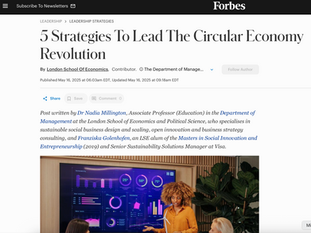As part of Berlin’s ongoing efforts to strengthen its circular economy, Circular Berlin hosted a dedicated workshop on the future of electronics repair. Bringing together actors from policy, industry, and the repair ecosystem, the event focused on identifying actionable strategies to make repair more viable and visible. We were invited to contribute insights on the evolving European regulatory landscape and its implications for producers and local initiatives.
A sector under pressure – and underused
Germany has set ambitious goals for circularity, and the electronics sector has emerged as a critical focus. Despite this, key indicators show persistent challenges: shrinking device lifespans, rising e-waste volumes, and low collection rates for discarded equipment. In 2022, 3.26 million tons of electronic devices were placed on the market—double the figure from 2013—yet only 38.6% of waste electronics were collected, falling short of the 65% quota mandated by law. This shortfall represents a considerable loss of secondary raw materials and highlights the inefficiencies of current systems.
At the same time, EU regulations such as the Ecodesign for Sustainable Products Regulation (ESPR), upcoming PFAS restrictions, and strengthened Extended Producer Responsibility (EPR) frameworks are raising the bar for electronics producers. The pressure to adopt and implement circular strategies is growing. However, reuse, repair, refurbishment, and remanufacturing—commonly known as the R-strategies—remain far from mainstream in business practice.
A timely moment for policy and practice

During the event at MotionLab.Berlin, our super consultant Irina Chèvre provided an overview of recent European policy developments, including the expected rollout of a reparability index. From June 2025, smartphones and tablets will display a new energy label including this index, helping consumers make better-informed decisions. This requirement will gradually extend to other categories such as household appliances by 2026. Other national incentives, like France’s and Austria’s repair bonuses, are further contributing to a changing regulatory and consumer landscape.
Following our policy overview, participants engaged in four interactive discussions focused on systemic levers for change:
Product responsibility: Design for disassembly, modular components, and easier access to repair information.
Infrastructure: Improving access to spare parts and supporting local repair hubs.
Technology: Exploring the role of digital tools such as QR codes, AI-based diagnostics, and 3D printing.
Skills and education: Promoting repair as a professional pathway and ensuring fair pricing structures.
Takeaways and next steps
One recurring insight was the need for stronger alignment between policy and implementation, including economic incentives that support fair pricing for repair services. Collaborative platforms—both physical and digital—were seen as essential to scaling viable business models and nurturing repair ecosystems.
For us at Terraquota, participating in this workshop reaffirmed the importance of grounding circular ambitions in both regulatory clarity and operational feasibility. Repair is not only a technical question—it is also a matter of access, business viability, and cultural shift.
We look forward to contributing further to this transition, by helping companies and institutions navigate regulation, rethink value chains, and build practical roadmaps for circular electronics
Author : Helene Trehin Isermeyer, inspired by the take-aways shared by the Circular Berlin team and extracted from Terraquota's presentation and participation to the Workshop.






